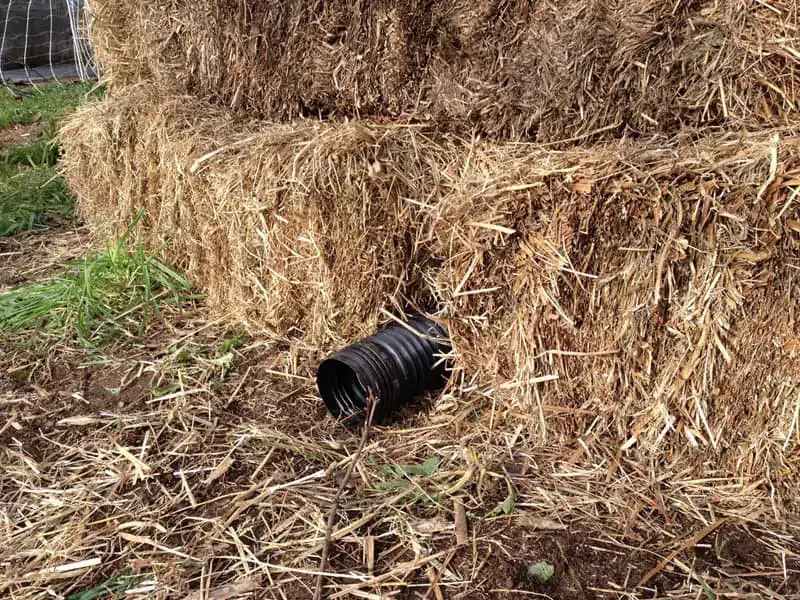Hot water is one of those modern conveniences that even the hardiest of nature enthusiasts and most green-hearted warriors never fully give up or get over.
Taking a cold shower just isn’t the same, isn’t nearly as fulfilling.
But, there is a way to have a hot shower without using gas or electricity to heat the water, and in fact, in the end, the process creates the beautiful gift of rich and fertile compost.
It’s amazing that every American doesn’t have a compost heap in their yard.
Related Post: How To Go Off-Grid
You can literally transform your soil by amending it with compost.
If you do this for 5 years you will see a tremendous change in the quality of your soil.
It’s basically a matter of grass, leaves and turning in food scraps.
The more you turn the pile the quicker you will get that great compost.
Here’s How To Get All Your Hot Water Needs From A Compost Mound…
7 Steps To Build Your Water Heat With A Compost Mound
Step 1: Lay Out the Mound
Stake out a circle approximately 12 feet in diameter.
Purchase hay bales from a local farm, collect fallen trees and branches, and rent a chipper.
A load of sawdust can usually be procured from a local sawmill: they will often deliver for a nominal fee.
Step 2: Create a Hay Bale Backstop + Add Aeration
Lay about 15′ of perforated 4″ tubing at the bottom of the mound, with each end protruding out of the perimeter.
Create a “backstop” of haybales to catch the woodchips as they are thrown from the chipper into the mound. Chip a layer of woodchips approximately 1′ high into the mound on top of the aeration pipe.
Step 3: Lay the Hydronic Loop
Coil 1/2″ plastic pipe at the bottom of the mound and hold it down temporarily with cinder blocks. Run the end of the pipe outside of the ring of hay bales, to be connected to your water source.
Step 4: Chips and Sawdust!
Chip wood into the pile, intermittently stopping to throw shovelfuls of sawdust in. The high carbon content of both materials create a lot of heat when decomposing.
Step 5: Continue Laying Water Pipe + Building Up the Mound
Once you get started, this project should take 1-2 days of labor.
Keep looping in water pipe and building up the hay perimeter as you add woodchips and sawdust.
Throw in some manure – any animal will work – if you have any.
Step 6: Fill Line with Water
The Pain Mound can be used to heat hot tubs, greenhouses or hydronic heating systems.
Plan out your location carefully ahead of time so that you are close to the thing you will be heating.
For more information, CompostPower.org has an excellent detailed installation guide, which can be found here: http://www.compostpower.org/node/24
Step 7: Track the Heat Output
If possible, consider including a series of temperature sensors with your water pipes, so that you can track the BTU output along the way.











